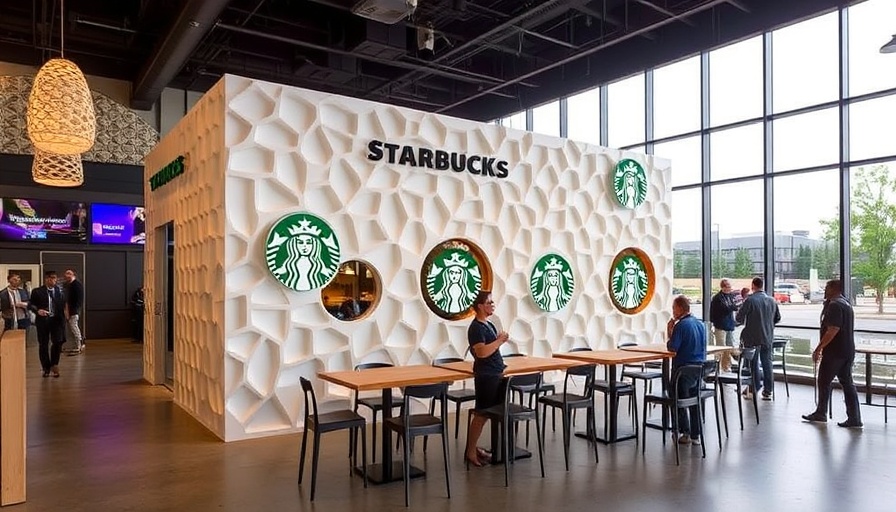
The Future of Coffee: How 3D Printing is Transforming Starbucks
In a significant leap towards innovation, Starbucks, the global coffee powerhouse, is set to unveil its first-ever 3D-printed store in Brownsville, Texas. This pioneering store is more than just a new location for coffee lovers; it's a glimpse into the future of construction and sustainability. The 1,400-square-foot establishment showcases a unique blend of cutting-edge technology and practical design, marking an exciting chapter in the coffee giant's expansion.
Improving Efficiency in Workspace Design
This groundbreaking building features exposed layered concrete walls, creating not only a striking visual but also illustrating the remarkable efficiency of 3D printing technology. Such methods contribute to creating functional workspaces that can cater to the needs of remote workers frequenting coffee shops like Starbucks. The printed structure allows for quicker assembly compared to traditional constructions, effectively reducing waste and long build times.
Artistry and Functionality Combined
Located along Boca Chica Boulevard, the store is designed specifically as a drive-thru, catering to the growing demand for convenience among busy consumers. The integration of artistic elements, such as the brand's iconic insignia seamlessly affixed to the concrete walls, not only enhances the store's aesthetic appeal but also offers an inviting environment for digital nomads looking for comfortable spots to work. Starbucks' commitment to creating well-designed, customer-centric spaces emphasizes the importance of environments that inspire productivity and creativity.
A Local Boon with Global Implications
The expansion into Brownsville aligns Starbucks with the area's burgeoning innovations, especially as a hub for 3D-printed projects. Just a short distance from Elon Musk's SpaceX facility, this location is strategically well-positioned. Texas is becoming a leader in 3D printing technology, with several projects, including residential and commercial buildings, making significant progress. This local initiative not only generates jobs but also encourages similar futuristic developments.
Comparative Insights: Global Trends in 3D Printing
Starbucks is joining a global trend where companies embrace 3D printing for its speed and efficiency. Recently, Japan revealed the world’s first 3D-printed railway station, constructed in a record six hours, showcasing the potential advantages of this technology. The incorporation of automation and robotics into construction processes could redefine traditional building methods, ensuring quicker, more sustainable outcomes. Both developments signal an era where efficiency meets functionality, resonating strongly with today's fast-paced lifestyle.
Health and Ergonomics in Modern Workspaces
For digital nomads, choosing the right environments is crucial for maintaining productivity and well-being. Starbucks’ 3D-printed store is designed not just for aesthetics, but it also reflects the importance of ergonomics in commercial spaces. Whether it's comfortable seating arrangements or encouraging social interaction, these features can significantly impact how effectively individuals can work remotely. Investing in ergonomic design helps reduce common issues associated with long hours of work, enhancing health and well-being.
What This Means for the Future of Retail Spaces
As Starbucks transitions into a technologically advanced future, it is essential to consider how such innovations can affect retail spaces. The results of integrating 3D printing into mainstream construction could lead to more adaptable retail formats, potentially allowing for quicker responses to consumer needs, and creating more sustainable practices. This signifies a positive shift towards environmental responsibility, a crucial aspect of the modern consumer culture.
The anticipated launch of this 3D-printed Starbucks on April 28th presents a unique opportunity for the local community and remote workers. By engaging with such innovative business models, individuals can contribute to a more sustainable and efficient economic future. As technology continues to evolve, so too will our expectations of how and where we work. In this fast-changing landscape, be sure to explore what makes a workspace truly effective for you.
 Add Row
Add Row  Add
Add 




Write A Comment